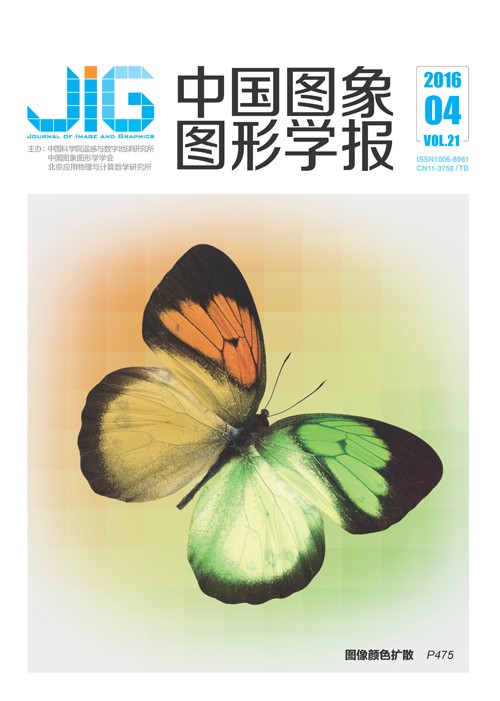
图像自适应分块的压缩感知采样算法
摘 要
目的 在图像压缩感知过程中,不管是整体采样还是固定分块采样,都不能充分利用图像的稀疏性,存在采样率与图像重构质量的矛盾。提出了一种基于图像纹理变化的自适应分块感知采样算法ABCS(adaptive block compressed sensing),再结合JPEG量化思想,在不降低图像重构质量的前提下降低采样率,更大地提高压缩比。方法 首先进行图像预分块,计算分析各块纹理复杂度,当图像块纹理复杂度低于相应阈值,选择最佳采样率对各块观测采样,当图像块纹理复杂度高于相应阈值,需再分块,重复上述步骤,达到最小16×16块时停止分块。当最小块的纹理复杂度高于最大阈值采用JPEG量化编码,其他块选择匹配的采样率,以压缩感知方式压缩。结果 ABCS算法与典型的压缩感知重构算法结合并与其原始算法比较,在相近采样率条件下,图像重构质量提高明显,尤其在低采样率下性能更佳,如20%采样率下重构图像PSNR值达到30 dB左右。结论 提出的自适应的分块采样充分利用图像的稀疏分布,提高压缩感知的效率;高复杂纹理块采用JPEG编码处理,避免了重构质量差的缺点,同时减少了重构时间。
关键词
Image compression sampling based on adaptive block compressed sensing
Cao Yuqiang, Bai Sen, Cao Mingwu(Chongqing Communication Institute, Chongqing 400035, China) Abstract
Objective Image sparsity cannot be fully exploited through either whole or fixed block sampling during image compressive sensing(CS). An insurmountable discrepancy is observed between sampling rate and image reconstruction quality. This study proposes an adaptive block compressive sensing(ABCS) algorithm based on the changes of image texture. The algorithm combines JPEG quantization methods and reduces the sampling rate to increase the compression ratio without reducing the quality of the premise of image reconstruction. Method The proposed ABCS algorithm requires that the image be roughly divided into blocks for starters. Then, the texture complexity of each block is calculated and analyzed to select the optimal sampling rate in the CS process. Whether a block should be further divided depends on whether its texture complexity is higher or lower than the corresponding threshold. When the texture complexity is lower than the corresponding threshold, the optimal sampling rate should be selected to apply compressive sampling. When the texture complexity is higher than the corresponding threshold, the block should be further divided into even smaller blocks. The process is repeated until the block size is 16×16. After the division, if the texture complexity is still higher than the maximum corresponding threshold, then JPEG quantization coding should be applied. Result The new compression algorithms are generated by combining the ABCS and typical CS reconstruction algorithms. Experiments were conducted to compare the new algorithms and the original algorithms. Under the condition of similar sampling rate, the quality of the reconstructed image is evidently improved, particularly at a low sampling rate. For example, the peak signal-to-noise ratio of the reconstructed image is approximately 30 dB at 20% sampling rate. Conclusion Simulation results show that adaptive block sampling makes full use of the sparsity of the image and improves the efficiency of compressed sensing. The blocks using JPEG encoding avoid poor-quality reconstruction of the complex texture area and reduce the reconstruction time.
Keywords
|



 中国图象图形学报 │ 京ICP备05080539号-4 │ 本系统由
中国图象图形学报 │ 京ICP备05080539号-4 │ 本系统由